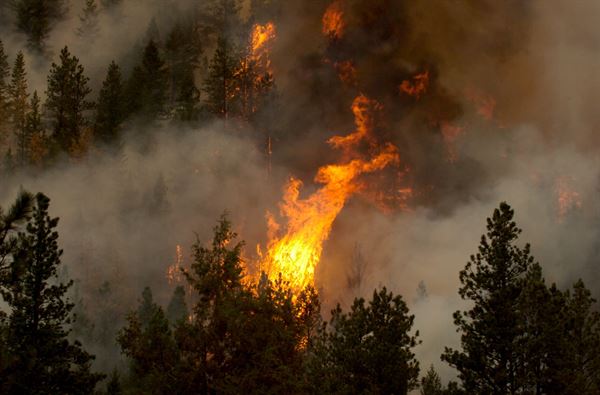
Over the last century natural disasters have increased both in frequency and severity, killing thousands of people and costing trillions of dollars (United Nations, 2015). Despite the fact that natural hazard mitigation reduces fatalities and saves significant amounts of money (Godschalk et al., 2009; National Institute of Building Sciences, 2018), communities are still underprepared (Ablah et al., 2010; Bourque et al., 2012).
This research helps to refine risk communication best practices and better understand what motivates individuals to prepare. We investigate this topic first by examining how hazard maps help people understand their risk and second by surveying residents who are at risk for Cascadia Subduction Zone earthquake. This research uses the Protective Action Decision Model (PADM; Lindell & Perry, 2004; 2012) as a framework to investigate whether educational strategies are effective, change attitudes, and motivate household preparedness.
The first study investigates how the use of natural hazard map best practices influences university students’ comprehension of risk. In this study, we surprisingly found that testing a best practice version of an interactive hazard map did not significantly improve comprehension. Additionally, we found map comprehension to have a significant relationship objective tests of spatial ability. This suggests that more study is needed to understand the cognitive process associated with how people understand hazard maps.
Read More Here: Science Direct: Does updating natural hazard maps to reflect best practices increase viewer comprehension of risk?
The second study produced two papers that investigate preparedness levels, perceptions of risk, and behavioral change among residents of the Portland, Oregon metropolitan area. The first paper examines how prepared residents in Portland, Oregon metropolitan (PDX) region are for a CSZ and compares those preparedness levels to other PNW regions using similar data from multiple surveys over a 20-year time interval. We find that 63% of PDX residents do not intend to ‘‘Drop, Cover, and Hold On’’ (DCHO) (the recommended action) when earthquake shaking starts and that, although residents are generally aware of earthquake hazards in the area, they are less aware of the specific risks for their homes. Furthermore, PDX residents’ preparedness levels seem to be comparable to those recently surveyed in Washington, but somewhat less than those surveyed two decades ago in California, though more comprehensive data are needed to verify these results. We also find that people rate risk information provided by emergency managers and their websites as more accurate, understandable, relevant, and new than other sources. Our results suggest that significant gaps remain in translating broad awareness of the CSZ earthquake into personal knowledge and preparedness.
The second paper focuses on examining how information seeking–the process by which people gather information about their risk and how to prepare–influences planned or actual preparedness. Consistent with previous research, this study finds information seeking behavior to be the strongest influence on preparedness with other important influences being risk perception, affective response, and intentions to prepare. We find weak ties between risk zone residency and earthquake risk perception, though this may be because our sample had little experience with earthquakes and the majority live in the same earthquake risk zones.
Read Paper 1:
From information to public preparedness in the Cascadia Subduction Zone
Overall, this work provides needed context for the factors that contribute to people understanding their hazards risk and getting prepared. This study also has implications for improving strategies to inform communities and motivate preparedness before the next strikes. Recommendations include helping people to personalize their risks and developing risk information that reflects local cultures, priorities and concerns.
Investigators
- Carson MacPherson-Krutsky, Boise State University – Department of Geosciences PhD Candidate
- Dr. Brittany Brand, Boise State University – Department of Geosciences
- Dr. Michael Lindell, Boise State University – Department of Geosciences Affiliate Faculty